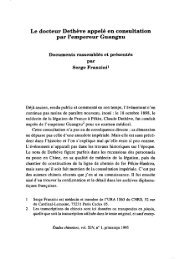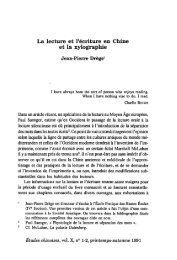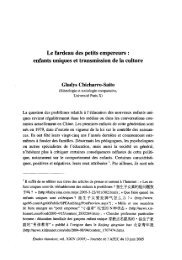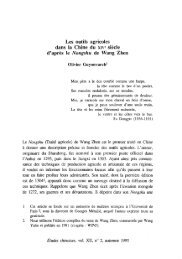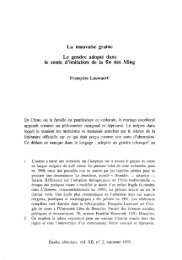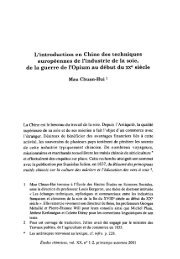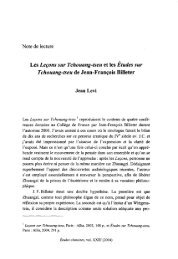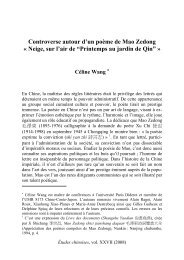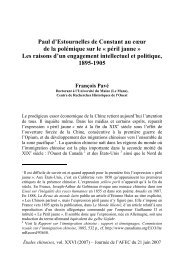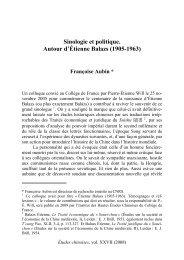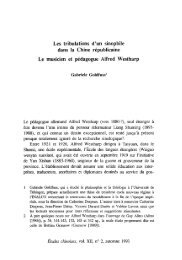Create successful ePaper yourself
Turn your PDF publications into a flip-book with our unique Google optimized e-Paper software.
Comptes rendus<br />
quest, the most devastating cultural destruction seems to hâve been at the<br />
hands of the Ming. It does not do to treat this as mainly the work of the<br />
Yuan (p. 117), but it is above ail a pity that this sort of multiplicity is<br />
neglected in dealing with the bigger 'transition' from Song to Ming.<br />
Some détails. It goes against the grain for me personally, and I expert<br />
for most readers, to turn a review into a self-centred argument with a<br />
book's views of one's own work, but hère it is ail but unavoidable. My<br />
socio-economic essay of 1973, The Pattern ofthe Chinese Past, is taken as<br />
one of the major référence points by the editors, and while some friendly<br />
things are said about it (which I appreciate) several of its key argument are<br />
bypassed with von Glahn's tantalizing phrase (p. 37) that "ail three components<br />
of Elvin's 'fourteenth-century turning point' hâve been challenged."<br />
But rightly or wrongly? And on what grounds? Among other<br />
readers, I would rather like to know. Moreover, my thirty years of later<br />
work on related topics, much of which has nuanced or even altered parts of<br />
Pattern, such as that on the nature of incrémental technological improvements<br />
in the Ming and Qing, or the 'technological lock-in' slowly created<br />
by the intensification of lowland farming and improved hydraulics, are<br />
passed over in silence. Elvin even long before 2003 was significantly<br />
différent from the Elvin of 1973.<br />
What struck me when researching Pattern thirty or so years ago was<br />
that certain key trends did seem to reach a climax in Southern Song, Jin or<br />
early Mongol times, and then fade from the scène. One of thèse was the<br />
création of original mathematics, another was the development of waterpowered<br />
spinning and twisting machinery as recorded in 1313. Neither of<br />
thèse domains is dealt with in the présent book, but the lead editor, Paul<br />
Jakov Smith, refers to an unpublished article written by Roger Hart for the<br />
original conférence that deals with mathematics. I hâve not seen this article,<br />
but it would seem to contain one clear misconception and one probable<br />
(but arguable) one. The first misconception is that the continuing<br />
compétent use of mathematics somehow voids the point that, at least for a<br />
long time, originality died. It doesn't. The second is Hart's reported use of<br />
the great musicologist Zhu Zaiyu, who flourished in the later sixteenth<br />
century as, at least by implication, an example of a créative mathematician.<br />
375



